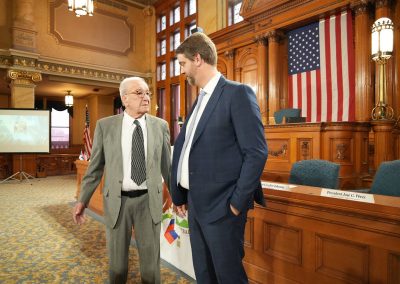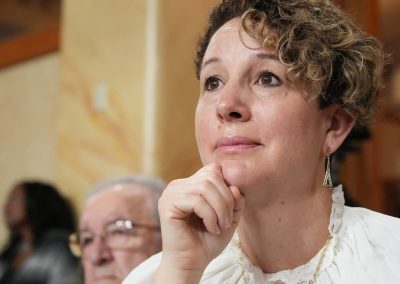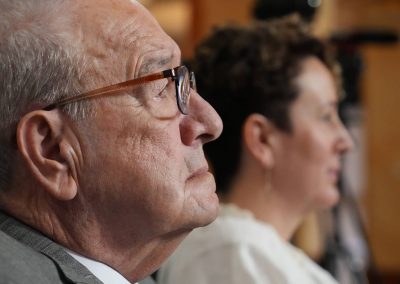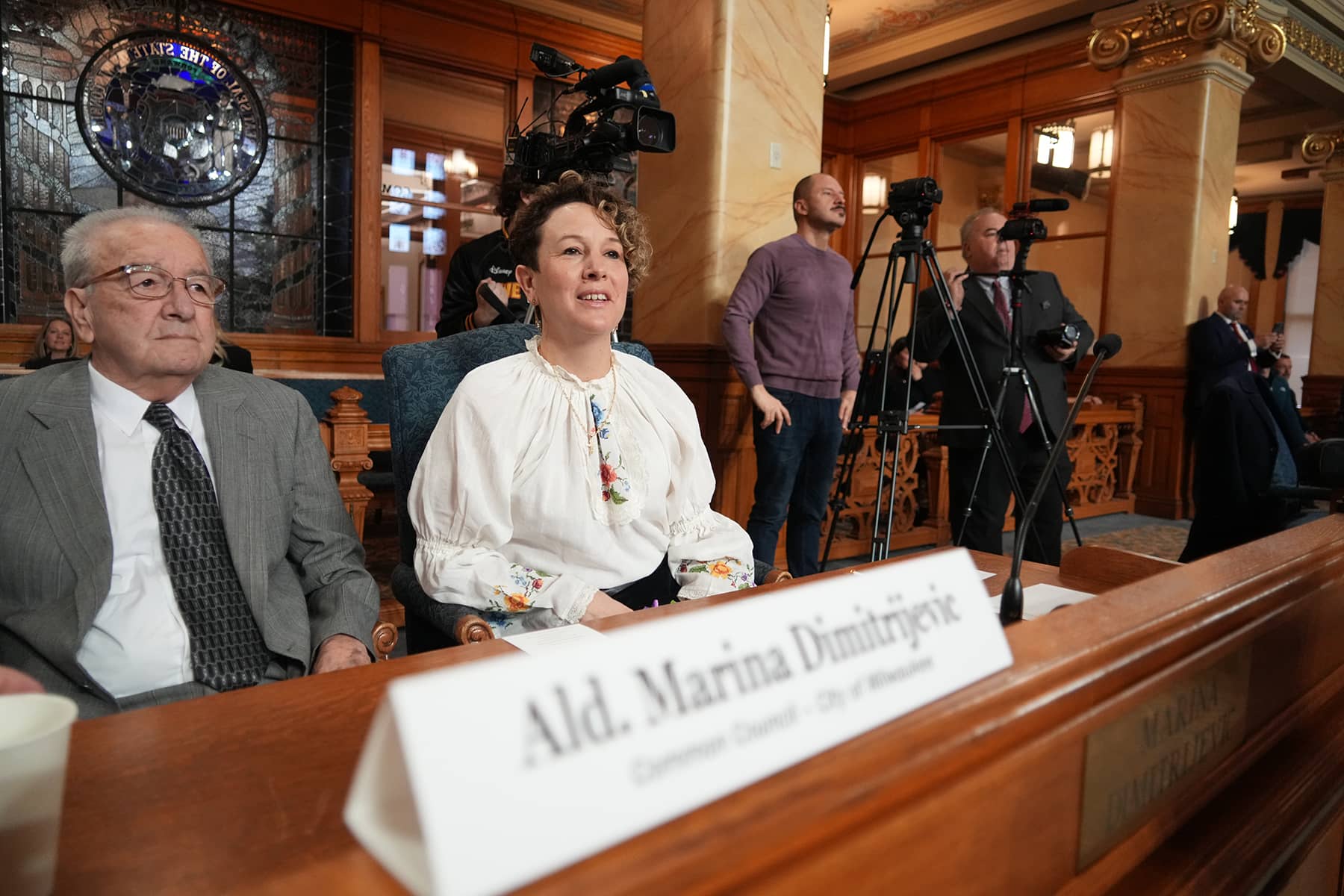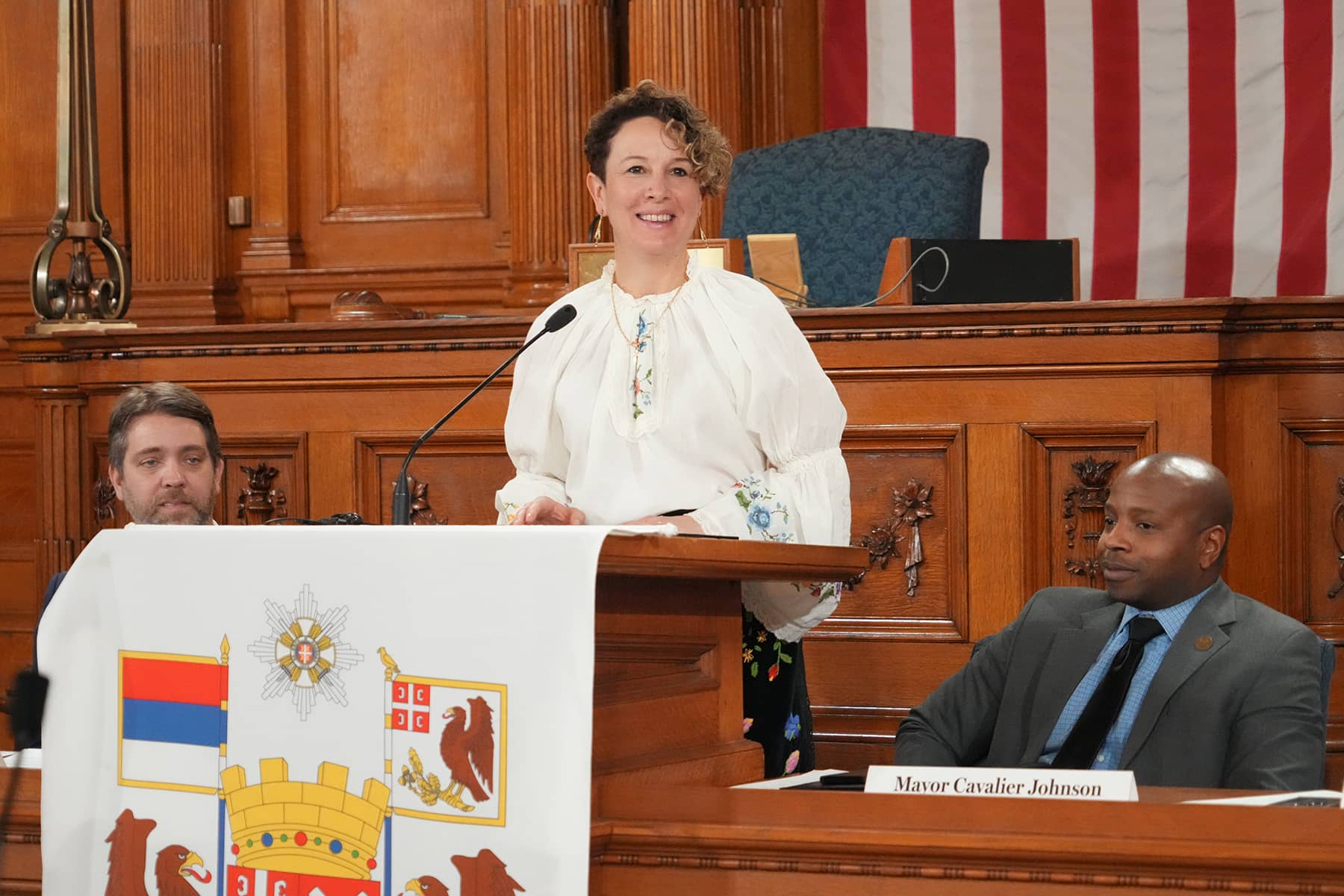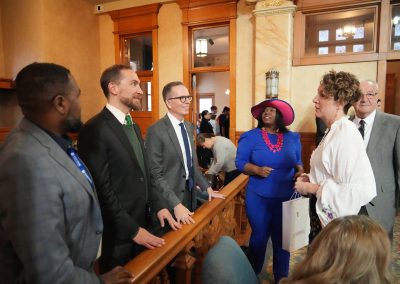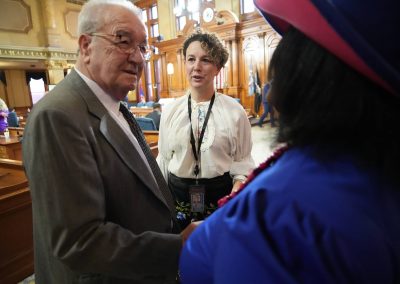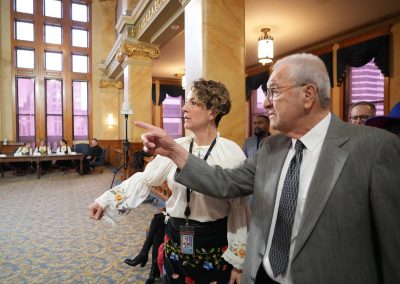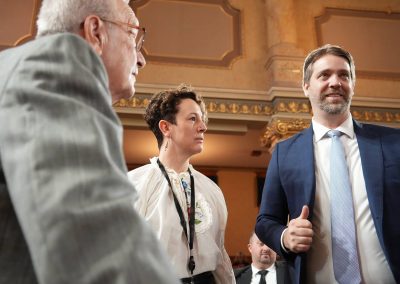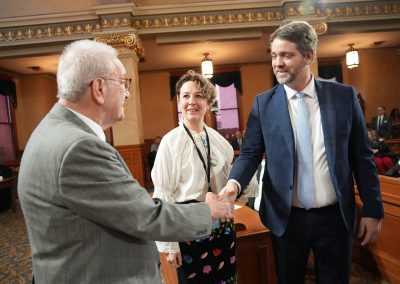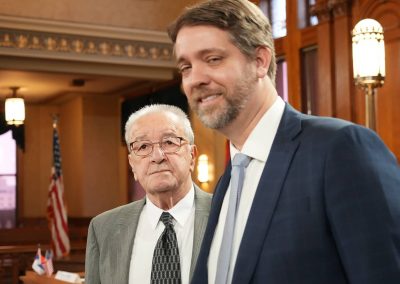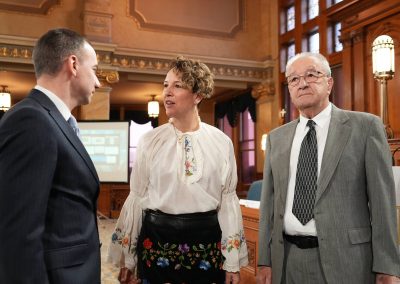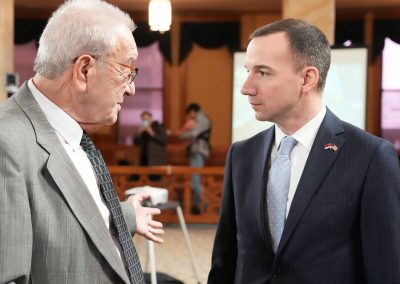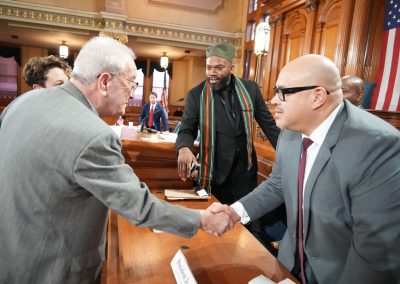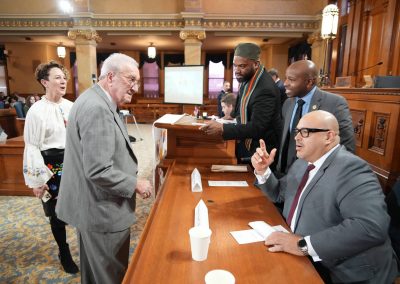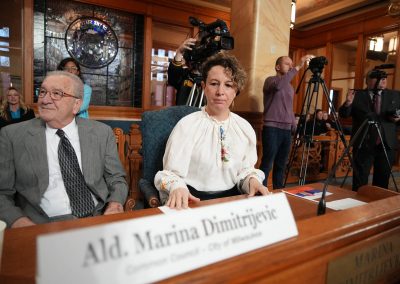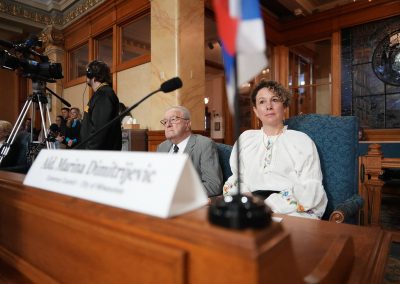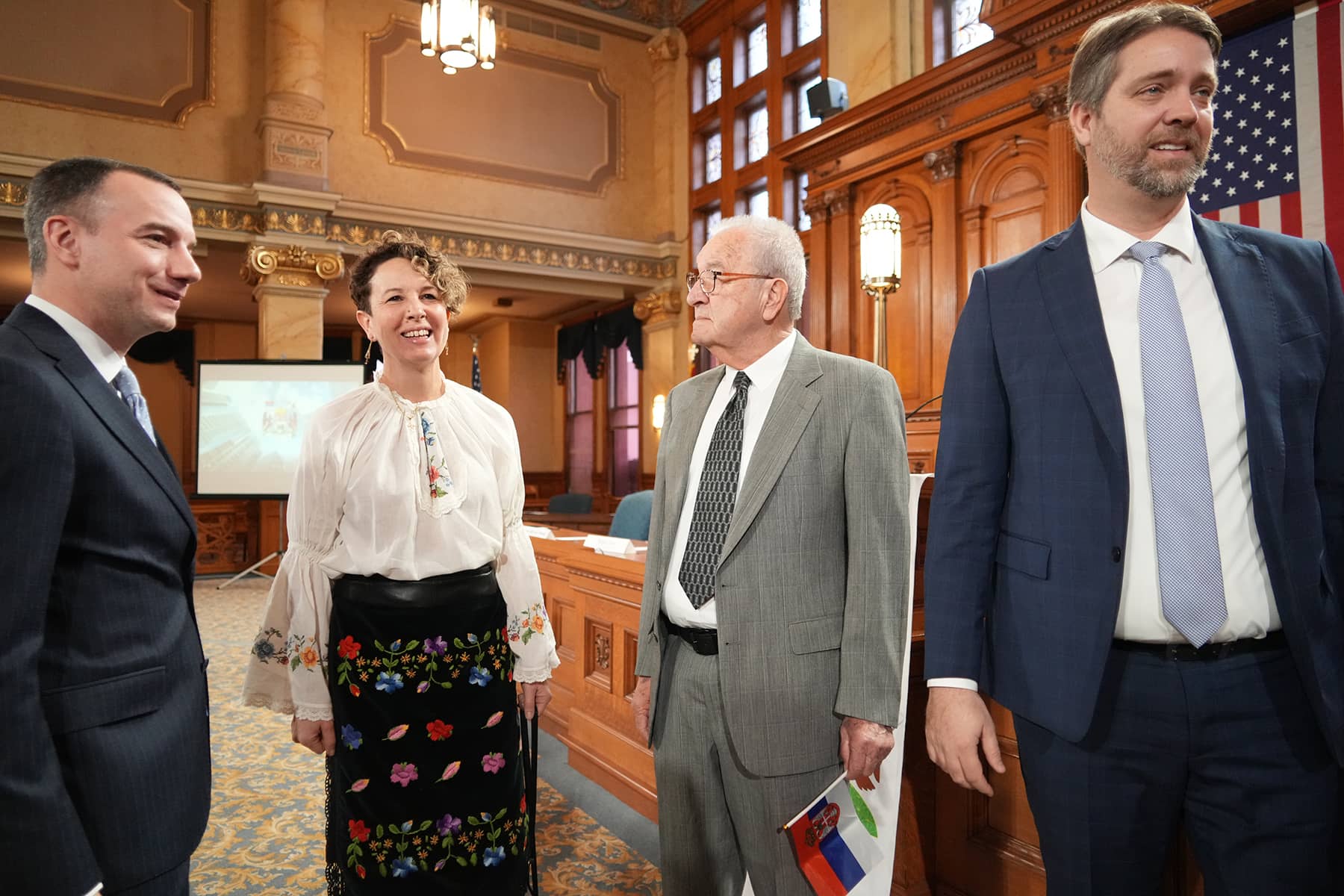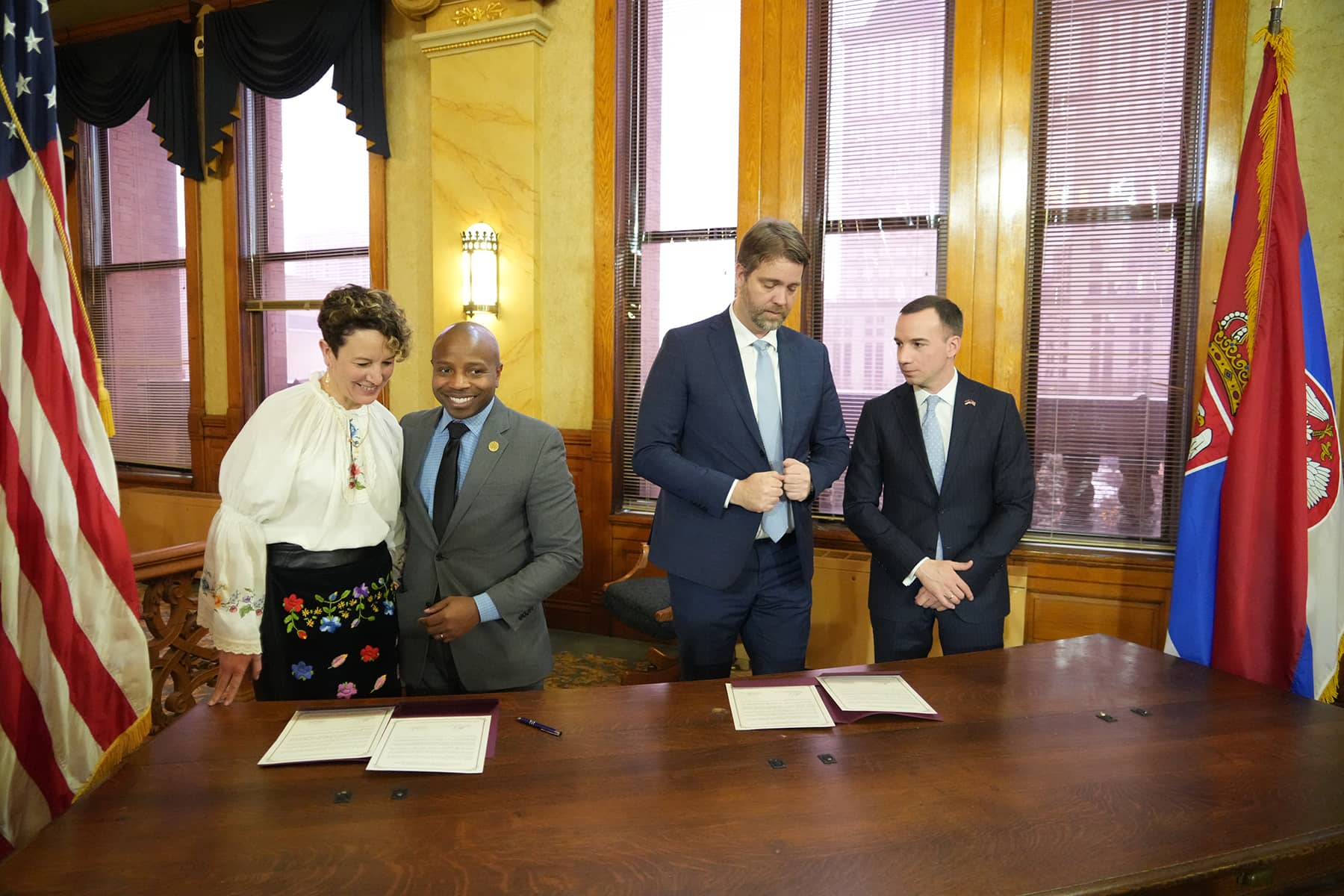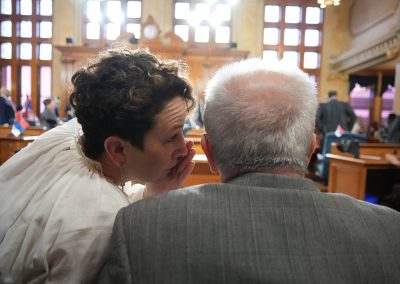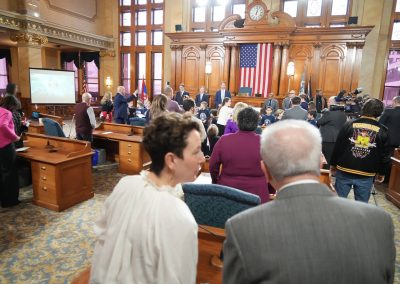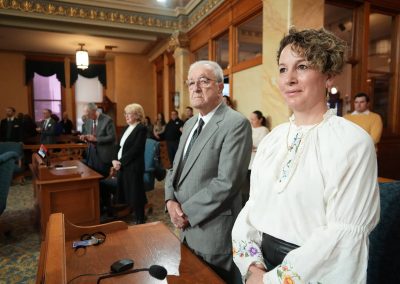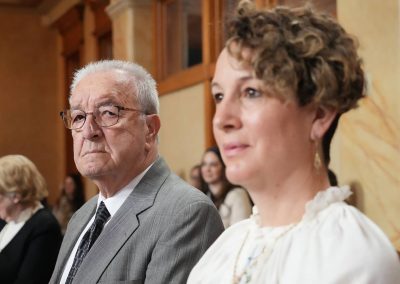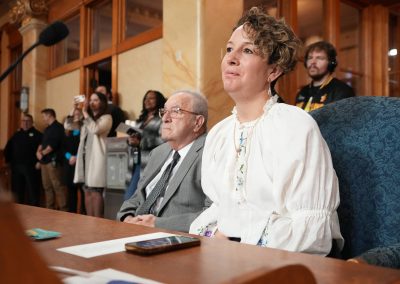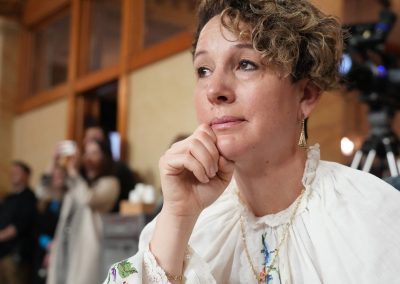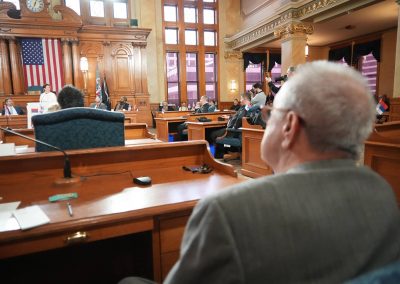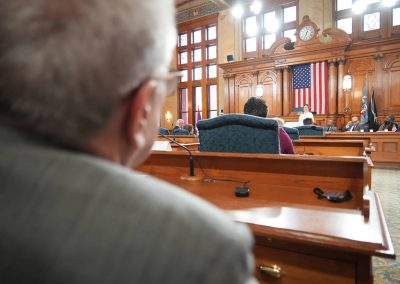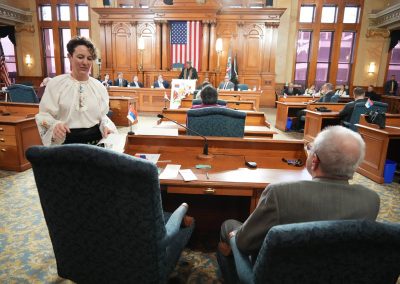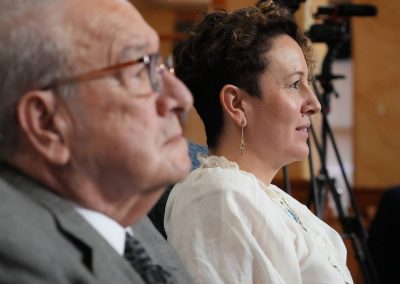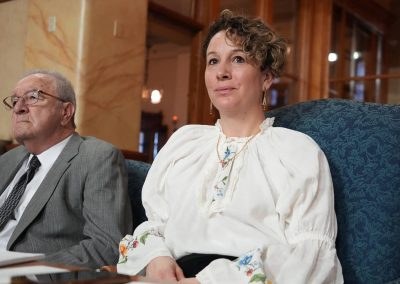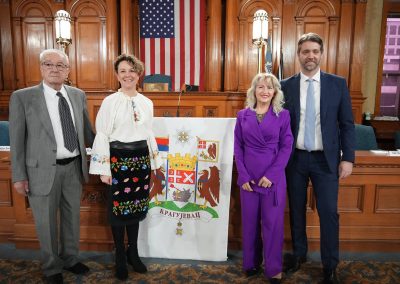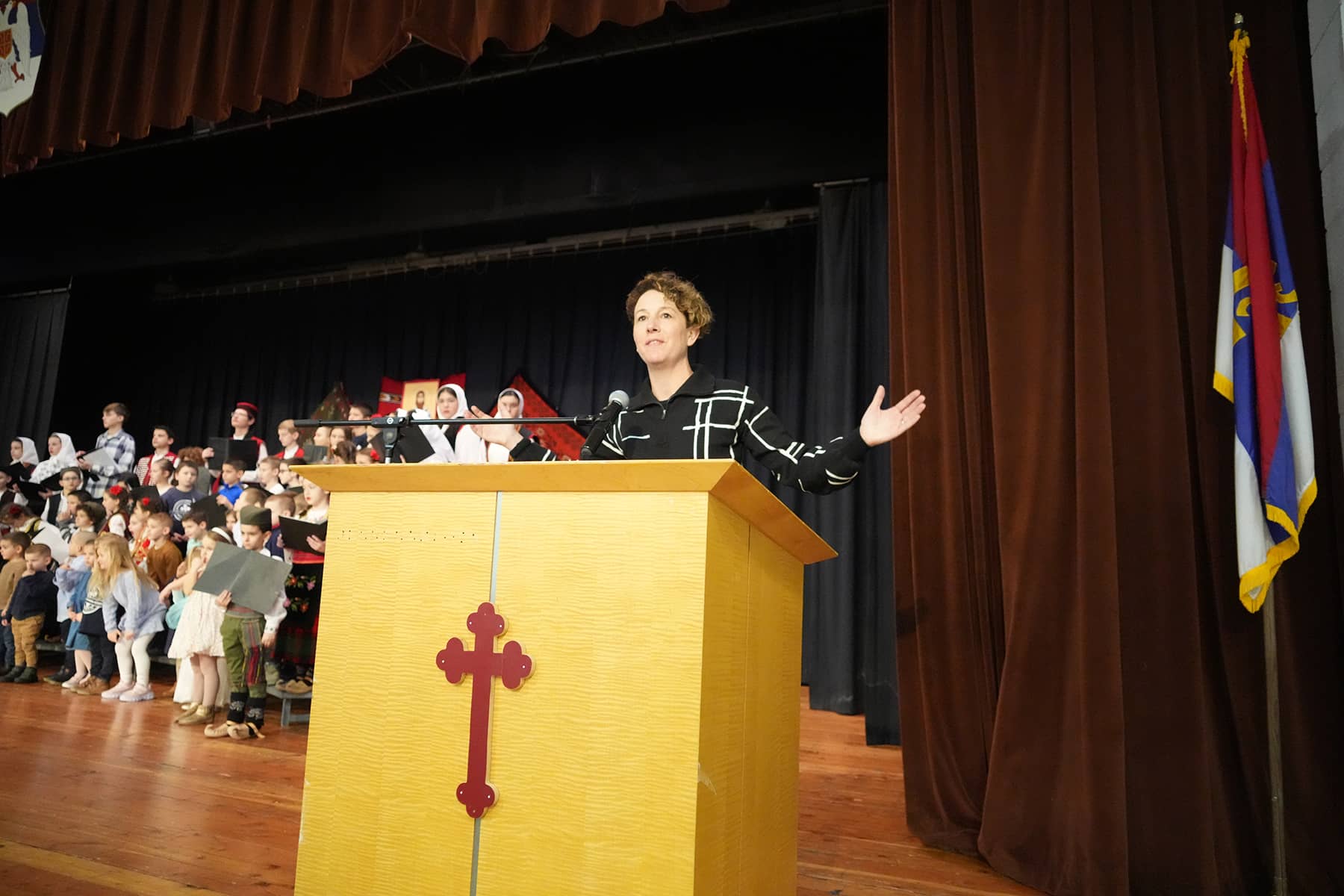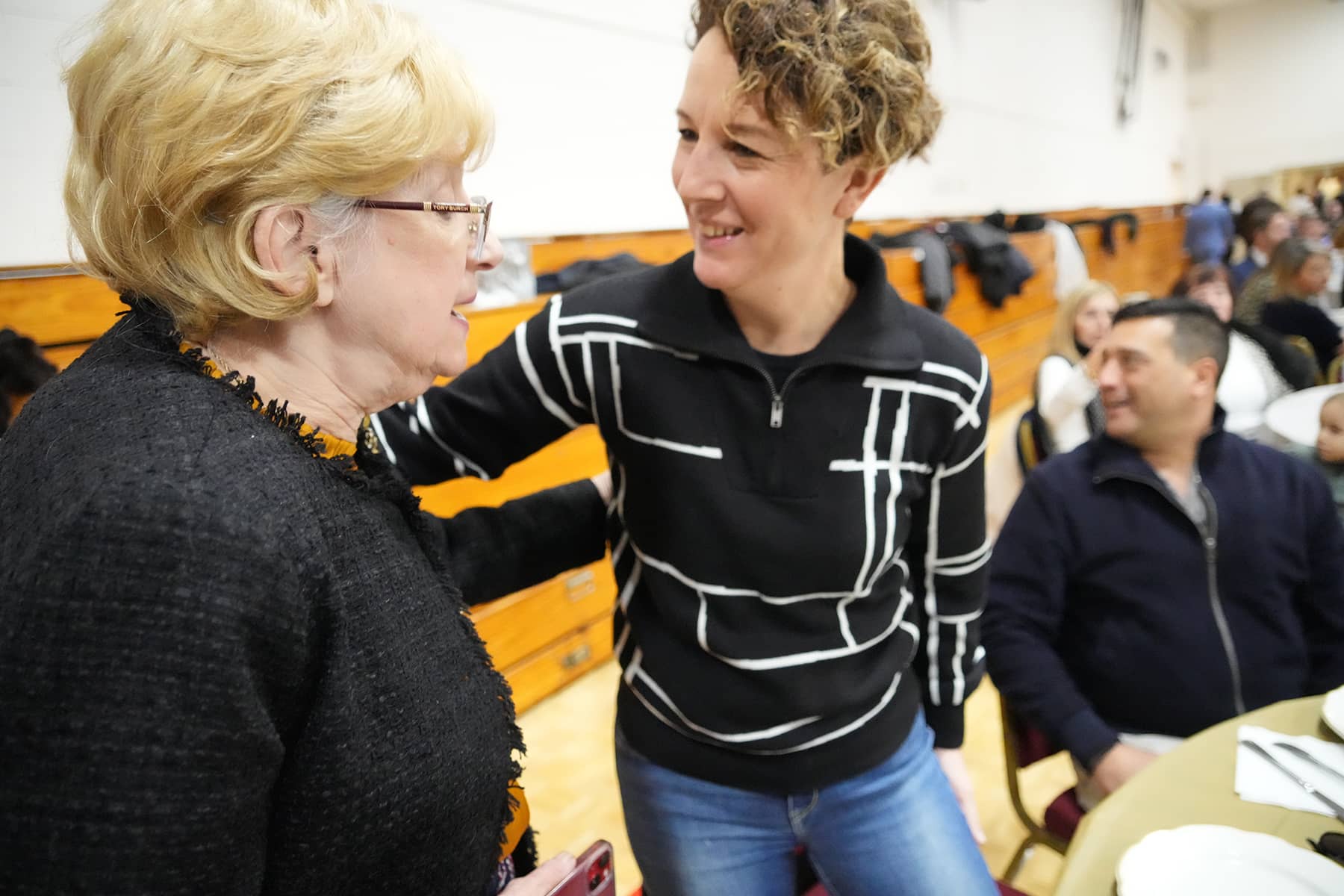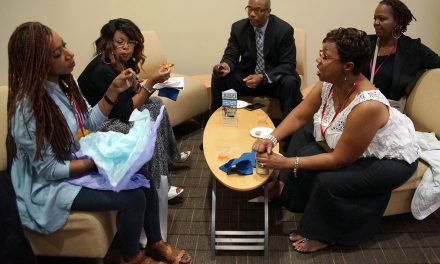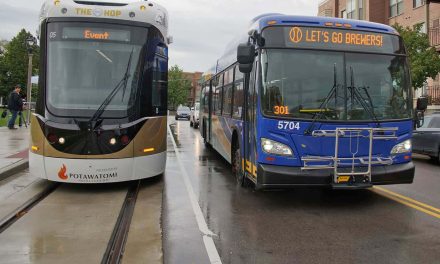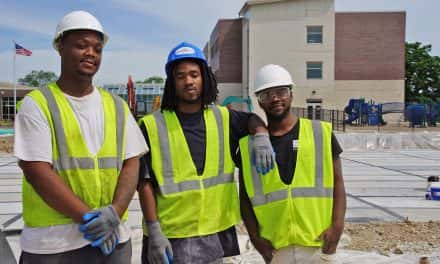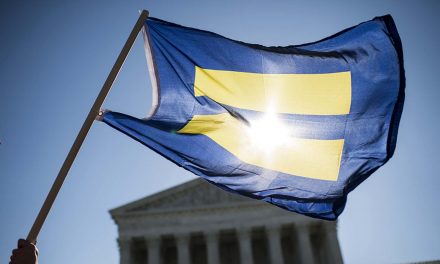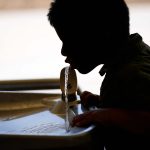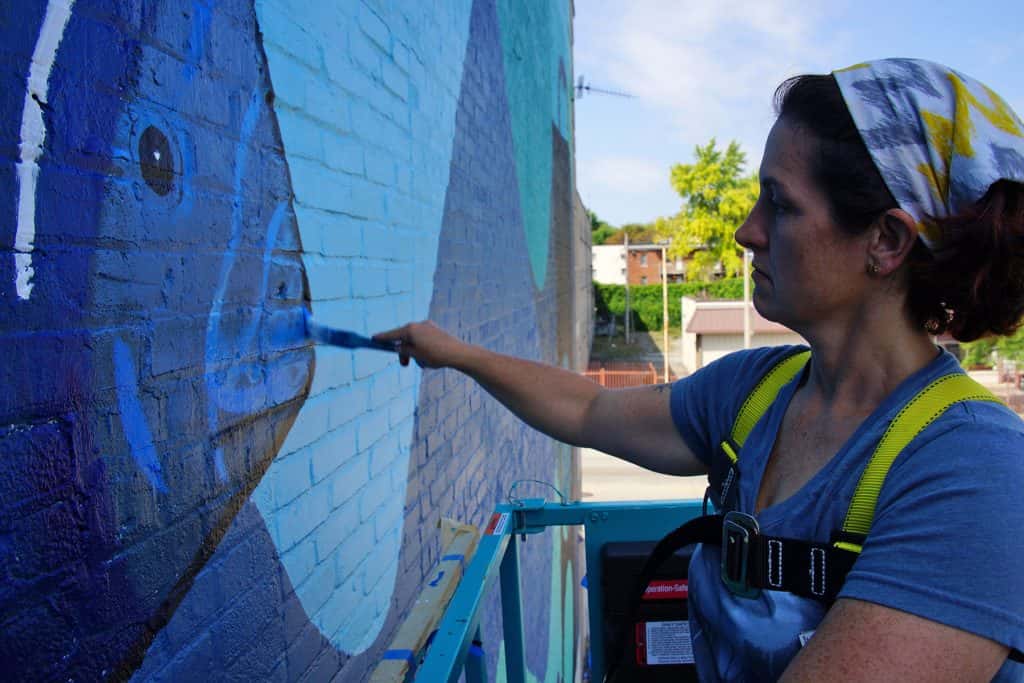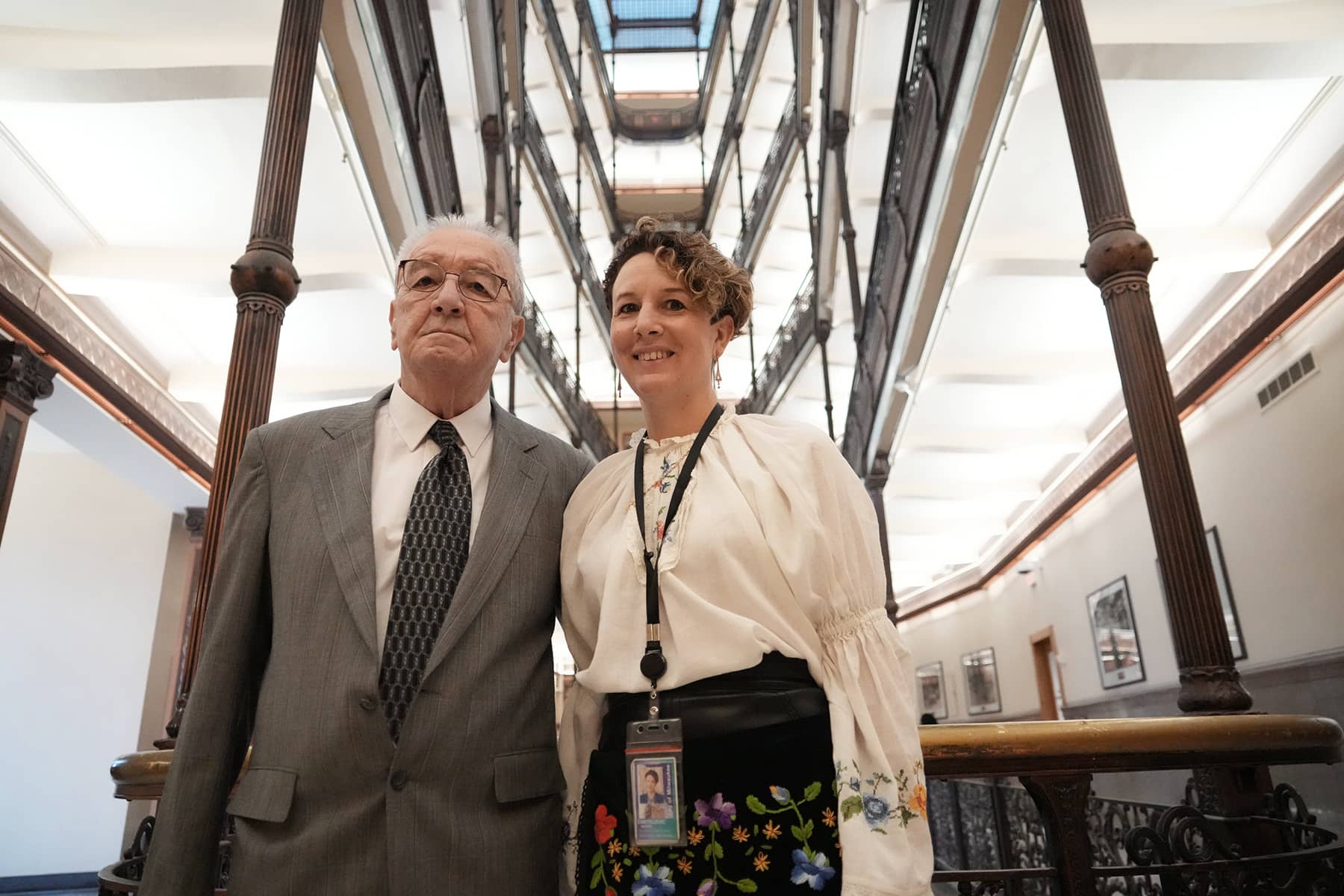
In a city like Milwaukee with a history woven by diverse ethnic threads, Alderwoman Marina Dimitrijevic is an example of a unique community tapestry that both honors her heritage and incorporates those cultural lessons into her public service.
As the Alderwoman of Milwaukee’s 14th District, Dimitrijevic participated in the Sister Cities agreement signing ceremony – between Milwaukee and Kragujevac, Serbia – at City Hall on January 26. As the daughter of proud Serbian immigrants, she sat at her Common Council desk with her father at her side.
The event was a significant moment not just in the city’s diplomatic history but also in her own experience. Dimitrijevic’s father Stanislav, known to his friends by Sasha, was a testament to the immigrant journey that shaped so many Milwaukee stories.
“We all come from different places, some of those places we didn’t want to leave, some we did, and many of the places we came from may not still exist in the same way,” said Dimitrijevic. “The Sister City relationship speaks to the value of bringing the best parts of our ‘home’ cultures and communities to learn from, and to improve the fabric of the place where we are now, together.”
Reflecting on the significance of the new bond with Kragujevac, Dimitrijevic said that the signing of the Sister Cities agreement was more than just an ornamental partnership. It was a bridge between two worlds, each rich with its own history and culture. The initiative promised to bring new opportunities for cultural exchange, economic growth, and mutual understanding.
Milwaukee’s Serbian community has long-standing roots that go back for decades, originally established through the pursuit of industrial work.
“As is common in the Serbian diaspora, the St. Sava Serbian Orthodox Cathedral has been and remains an important place in Serbian-American social life, where traditions, language, and ethnic commonalities are passed on and exchanged,” said Dimitrijevic. “The church has also encouraged the formation of secular Serbian events and clubs, however, and encourages sites for cultural exchange and for deepening economic relationships.”
Dimitrijevic was optimistic that relationships between the people of Milwaukee and Kragujevac would be strengthened and continue to grow. One social step forward between the two communities took place the following day on January 27 at St. Sava Serbian Orthodox Cathedral. The Kragujevac delegation joined Milwaukee’s Slava of St. Sava, a day of special significance in the local Serbian community. Dimitrijevic described it as a time for reflection, gratitude, and cultural celebration.
“In the Serbian Orthodox tradition, we celebrate the patron saints of our faith on specific days. This celebration is called Slava. On January 27, we celebrated St. Sava, who was the founder of the Serbian Orthodox Church,” she said. “It is a time to gather with family and friends and be thankful for all the blessings in our lives and, most importantly, for our faith.”
St. Sava is the patron saint of the St. Sava Serbian Orthodox Cathedral in Milwaukee, so he is celebrated on January 27. Dimitrijevic said that for her personally, the slava was a time to reflect and enjoy the beautiful Serbian culture.
As a proud Orthodox Serbian American, she hoped to pass some of those rich traditions down to her own children, who are also Uruguayan. Her husband Eduardo Jaime Pugliese was a former alderman in the city government in Montevideo, the capital of Uruguay.
The countries now known as Bosnia and Herzegovina, Croatia, Montenegro, North Macedonia, Serbia, and Slovenia were all part of Yugoslavia before the 1990s. How Dimitrijevic’s parents met in Milwaukee is also a familiar story in the immigrant tradition.
Her mother was born in the United States to Slovenian parents. So at one time they were all Yugoslavians. Her father came to Milwaukee over 50 years ago, and knew no English. He worked at the old Harnischfeger factory on the south side.
“I like the story I heard many times that my parents met at a popular Serbian bar called Saratoga where they danced to Serbian music,” said Dimitrijevic.
Like many working families, Dimitrijevic remembered that her home life came with ups and downs, but her parents did the best they could with what they had. Her father worked very hard and eventually opened his own house painting business. He was known, and still is, as “Sasha the Painter” because he employed many newly arriving Serbs.
Referring to her speech during the Kragujevac event at City Hall, she said, “whatever happened, even financially, we always put family first. My father speaking English as a second language was a challenge, as well as seeing family abroad and communicating with them. Some of Serbia’s hard times as an emerging country was also hard to watch from afar.”
She said that her father told many stories of Communism in Yugoslavia, and was always thankful for the opportunities that existed in the United States. Part of that influence is what led Dimitrijevic and her sister Sonja to follow careers as public servants and work in government. But other stories focused on her Serbian heritage, recognized for its warmth and strong family ties.
“The Serbian culture is one that I am honored to be part of. The Serbs are known to be extremely resilient as well as the most hospitable hosts you will ever meet. Family is first and sacred. If you are close to a Serb, you are in our family,” added Dimitrijevic. “We work hard and celebrate hard. We enjoy the great things of life and have some of the most beautiful music, dances, mosaics in Church, and delicious Serbian food. We are great neighbors and have helped make Milwaukee the city that it is and will be.”
Dimitrijevic’s life is just one example of how Milwaukee is enriched when people embrace their heritage, and seek to understand others in the community better. As Milwaukee grows, which is a Minority-Majority City, the contributions of its diverse cultures – including the Serbian one, will be key in shaping its future.
Like the great Nikola Tesla – who had Serbian roots, Dimitrijevic said that Milwaukee needs people who are great inventors and have a natural entrepreneurial spirit. It was her hope that, as a Serbian-American, she could help bridge those different worlds and push for a Milwaukee that built on the strengths of its many cultures.
© PHOTO NOTE: All the original editorial images published here have been posted to mkeind.com/facebook. That Facebook collection of photos contains the Milwaukee Independent copyright and watermark for attribution, and may be used for private social media sharing. Do not download and repost images directly from this page.
- Strength of immigrant roots: How Marina Dimitrijevic builds a cultural bridge between Milwaukee and Serbia
- Serbia’s Kragujevac sees a new chapter of international cooperation with Milwaukee as a Sister City
- The Slava of St. Sava: A photographic journey into the experience of Serbian Orthodox faith in Milwaukee
- A nation at the crossroads: Understanding the global impact of Serbia’s internal political discontent
Lee Matz

